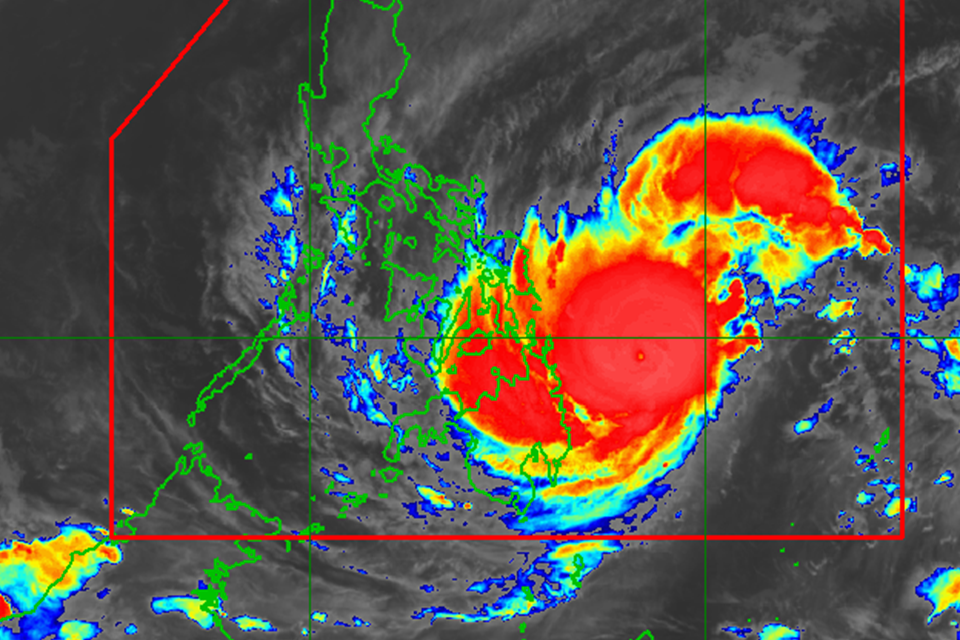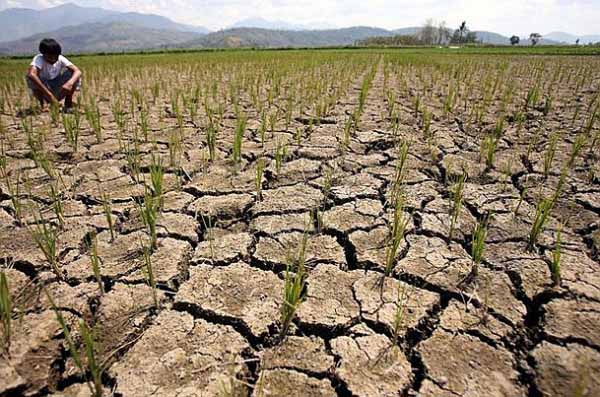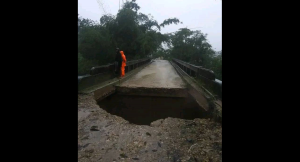Typhoon Odette has further intensified and has maintained its path towards Bohol prompting the state weather bureau to place the entire province under Signal No. 3 for the first time in almost a decade.
Odette was projected to cross Bohol within the day, according to the latest forecast track issued by Philippine Atmospheric, Geophysical and Astronomical Services Administration (PAGASA) at 5 a.m. Thursday.
It will be the first typhoon-category cyclone that will directly hit and sweep through Bohol in recent history.
“Destructive typhoon-force winds prevailing are expected within 18 hours” in areas under Signal No. 3, PAGASA said.
The center of the eye of the typhoon was last spotted 330 km East of Surigao City, Surigao del Norte.
It was moving northwestward at 25 km/h.
According to PAGASA, the cyclone further intensified with its wind strength increasing to 150 km/h from 140 km/h.
The storm was also packing gustiness of up to 185 km/h and central pressure of 955 hPa (hectopascal).
“Today through tomorrow early morning, heavy to torrential rains over Caraga, Central Visayas, Misamis Oriental, Camiguin, Southern Leyte, and Negros Occidental,” PAGASA said.
According to PAGASA, the typhoon was seen to further intensify as it crosses the Philippine Sea and may reach a peak intensity of 155 to 165 km/h.
However, Odette would slightly weaken after making its first landfall in the vicinity of Dinagat Islands, Siargao-Bucas Grande Islands, or the northern portion of Surigao del Sur on Thursday afternoon.
“Post-initial landfall, Odette may see some slight weakening as it crosses northeastern Mindanao, Visayas, and Palawan, but it is forecast to remain as a typhoon,” PAGASA said.
On Wednesday night, Governor Art Yap issued Executive Order (EO) No. 64, suspending work in both government and private office from 12:01 a.m. of December 16 to 11:59 p.m. of December 17.
Classes in both private and public schools were also suspended during the same period.
In the same EO, Yap ordered the Department of Education to prepare its facilities for the use as evacuation centers.
“Moreover, DepEd School Districts, through their district supervisor or principals, within the Province of Bohol, are directed to immediately prepare their school buildings, facilities and other resilient structures to serve as additional evacuation centers,” Yap said.
Bohol was last hit by a cyclone in 2014 but the weather disturbance named “Seniang” was a tropical storm and did not intensify into a typhoon.
Its highest wind speed was recorded at 85 km/h but it produced heavy rainfall.







Be First to Comment